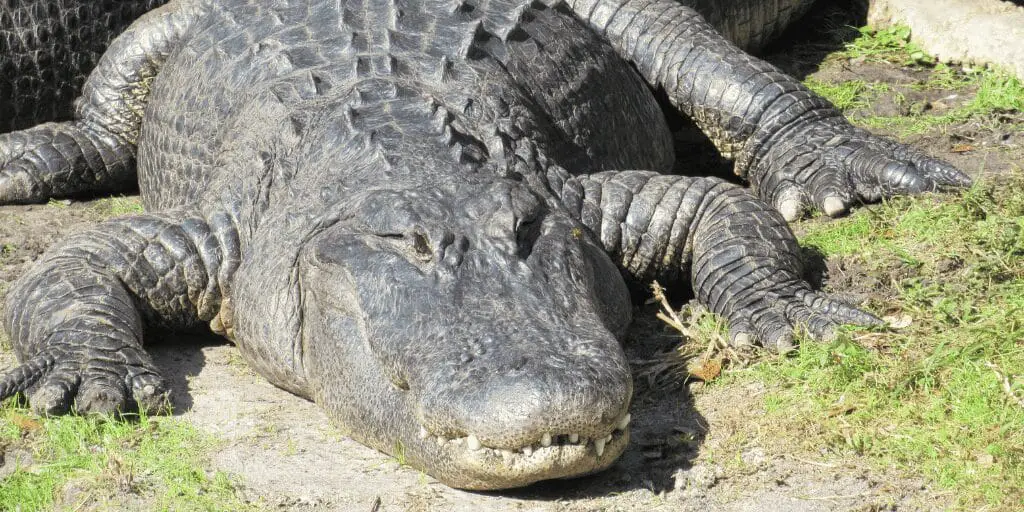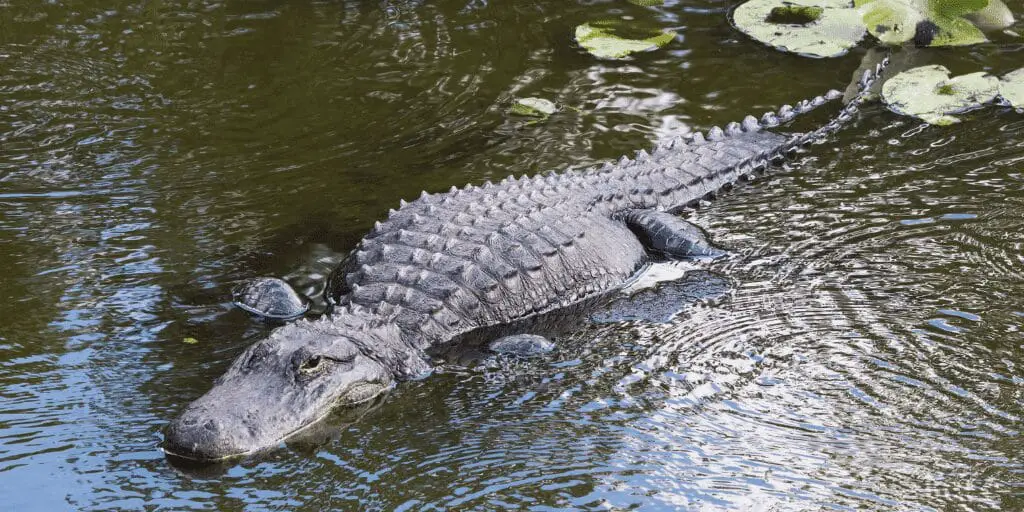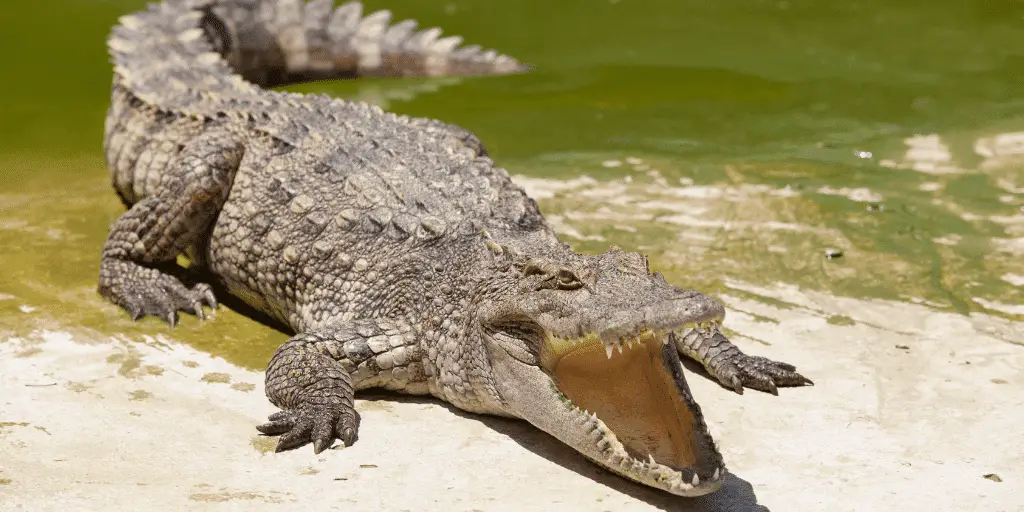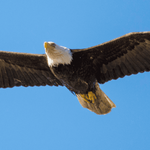In the murky waters of the animal kingdom, the question arises: do alligators and crocodiles get along? This pressing curiosity taps into the broader implications of cohabitation, survival, and ecological balance. Uncover the truth behind their complex relationship, the evolutionary marvels shaping their existence, and the environmental factors influencing their interactions.
Key Takeaways:
- Alligators and crocodiles belong to different families and have evolved distinct physical characteristics, such as snout shape and tooth visibility, which affect their hunting strategies and prey choices.
- While alligators prefer freshwater habitats and are mostly found in the southeastern United States, crocodiles are more adaptable, inhabiting both freshwater and saltwater environments across various continents.
- Both species demonstrate complex social behaviors, including intricate mating rituals and parental care, with alligators known to carry their young gently in their mouths and crocodiles sometimes keeping offspring close for up to two years.
- Alligators and crocodiles can coexist in shared habitats like the Florida Everglades by occupying different ecological niches, but environmental changes and human activities threaten this balance, leading to potential conflicts and competition for resources.
- Conservation efforts, including habitat restoration and protection laws, are crucial for the survival of alligators and crocodiles, with education playing a key role in debunking myths about their aggression and promoting safe human coexistence.
Do Alligators and Crocodiles Get Along?
Quick Answer: Alligators and crocodiles can coexist in shared habitats like the Florida Everglades, but they may compete and occasionally clash over territory.
| Category | Alligators | Crocodiles | Shared Aspects and Interactions |
| Taxonomy and Evolution | Belong to Alligatoridae family. | Belong to Crocodylidae family. | Evolved distinct characteristics due to millions of years of divergence. |
| Physical Characteristics | Darker coloration, U-shaped snouts, upper jaw hides bottom teeth when mouth is closed. | Olive to brown coloration, V-shaped snouts, both upper and lower teeth visible when mouth is closed. | Snout shape and tooth visibility affect hunting strategies and prey choices. |
| Habitat Preferences | Prefer freshwater environments like ponds, marshes, and swamps. Primarily found in the southeastern United States. | Inhabit both freshwater and saltwater environments. Found across various continents. | Coexist in shared habitats like the Florida Everglades by occupying different ecological niches. |
| Behavior and Social Structure | Exhibit complex social behaviors, intricate mating rituals, and parental care, carrying young gently in their mouths. | Known for complex social behaviors, keeping offspring close for up to two years. | Coexistence demonstrated through distinct mating rituals and parental care strategies. |
| Diet and Hunting | Opportunistic feeders with a “sit-and-wait” strategy, preferring hard-shelled prey like turtles. | Opportunistic feeders, active hunters with explosive bursts of speed, consuming a wide variety of animals. | Both species play pivotal roles as apex predators, maintaining ecosystem balance. |
| Conservation and Human Impact | Threatened by habitat destruction and pollution. Protected in some areas. | Vulnerable to habitat destruction, pollution, and illegal hunting. Conservation status varies globally. | Conservation efforts, including habitat restoration and protection laws, are crucial for their survival. Education on coexistence and debunking myths is key. |
| Interaction Dynamics | Territorial, with occasional competition and clashes over territory in overlapping habitats. | Territorial, capable of engaging in conflicts with alligators when habitats overlap. | Coexist through ecological and behavioral adaptations but face threats from environmental changes and human activities. |
Understanding Alligators and Crocodiles

Taxonomic Differences and Evolutionary Background
Diving into the scientific classification, alligators and crocodiles are not just casually different; they belong to separate families within the order Crocodilia. Alligators are part of the Alligatoridae family, while crocodiles belong to the Crocodylidae family. This distinction is not merely academic; it reflects millions of years of evolutionary divergence.
The ancestors of today’s crocodilians appeared over 200 million years ago, and they’ve been honing their survival skills ever since. Key adaptations such as armored skin, powerful jaws, and semi-aquatic lifestyles have enabled them to outlive the dinosaurs and thrive in a variety of environments.
Alligators, for instance, have a broader, U-shaped snout that’s more suited to crushing, while crocodiles have a V-shaped snout that’s ideal for gripping and tearing prey. These physical characteristics are not random but are the result of evolutionary pressures that have sculpted each species into the apex predators they are today.
Physical Characteristics and Identification
When it comes to identifying these reptiles, there are a few telltale signs to look for. Alligators often have a darker, almost black coloration, while crocodiles can range from olive to brown. One of the most distinctive features is the snout shape: alligators have wider, U-shaped snouts, whereas crocodiles sport more pointed, V-shaped snouts.
Another key identifier is the visibility of teeth when their mouths are closed. In alligators, the upper jaw is wider than the lower, so when they close their mouths, you can’t see the bottom teeth. Crocodiles, on the other hand, have interlocking jaws that display both upper and lower teeth, giving them a somewhat toothier grin.
These physical traits are not just for show; they play a crucial role in their survival. The snout shape affects the type of prey they can capture and the method of hunting they employ.
Alligators, with their powerful jaws, can crush hard-shelled prey like turtles, while crocodiles can snag a wider variety of animals with their sharp teeth and strong grip.
Habitat Preferences and Geographical Distribution
Alligators and crocodiles are often associated with water, but not all watery habitats are created equal. Alligators show a preference for freshwater environments like ponds, marshes, and swamps. They are primarily found in the southeastern United States, with the American alligator being a notable example.
Crocodiles, however, are more versatile in their habitat preferences, inhabiting both freshwater and saltwater environments. They can be found in rivers, lakes, wetlands, and even in the brackish waters of mangroves and estuaries.
The Nile crocodile in Africa and the saltwater crocodile in Australia and Southeast Asia are prime examples of crocodiles’ wide distribution and adaptability.
Behavioral Patterns and Social Structure
Contrary to popular belief, alligators and crocodiles can exhibit complex social behaviors. While they are often seen as solitary hunters, certain times of the year like mating season can bring out a different side of these reptiles. They engage in intricate mating dances, bellowing calls, and even gentle caressing to woo potential mates.
The care for offspring is another area where their social complexity shines. Mother alligators are known to gently carry their young in their mouths and protect them fiercely. In some species of crocodiles, the young may stay with their mother for up to two years, learning the ropes of survival in a harsh world.
Diet and Hunting Techniques
As apex predators, alligators and crocodiles play a pivotal role in their ecosystems. Their diet is varied and can include fish, birds, and mammals. They are opportunistic feeders, which means they can adapt their diet based on availability and necessity.
Alligators often use a “sit-and-wait” strategy, lurking just below the water’s surface for unsuspecting prey to come close. Crocodiles, on the other hand, are more active hunters, capable of explosive bursts of speed both in water and on land to catch their prey.
Both species have shown remarkable intelligence and problem-solving abilities in their hunting techniques, further cementing their status as top predators in their respective habitats.
Interaction Between Alligators and Crocodiles

Imagine wandering through the lush, waterlogged pathways of the Florida Everglades. You’re likely to encounter the formidable presence of alligators basking in the sun. But there’s another ancient predator lurking in these waters – the crocodile.
It’s here, in this unique ecosystem, that the paths of alligators and crocodiles cross, leading to a fascinating interplay between these two species. Let’s dive into the world where these reptiles coexist, compete, and sometimes even clash.
The Florida Everglades presents a rare stage where the American alligator and the American crocodile come face to face. But how do these seemingly similar reptiles manage to live side by side without constant conflict?
The secret lies in their ecological and behavioral adaptations. Alligators, for instance, have a preference for freshwater environments, while crocodiles are more tolerant of saltwater conditions.
This difference in salinity preference allows them to occupy different niches within the same habitat, reducing direct competition for resources.
Temperature also plays a crucial role. Alligators thrive in warmer waters, and during cooler months, they tend to become less active, giving crocodiles, which can tolerate slightly cooler temperatures, a competitive edge. This subtle differentiation in habitat preference is crucial for their cohabitation.
However, the stability of this coexistence is under threat. Climate change is altering temperature and salinity levels, potentially disrupting the delicate balance between these species.
Human encroachment, through urban development and pollution, further complicates the ecosystem. Conservation efforts are thus vital in preserving the unique habitats that support the coexistence of these remarkable creatures.
Territorial Conflicts and Dominance Displays
Despite their ability to coexist, alligators and crocodiles are not without their disputes, especially when it comes to territory. Both species are known for their territorial nature, and when their preferred habitats overlap, tensions can rise.
They employ a variety of behaviors to establish dominance, from bellowing vocalizations that resonate across the waters to imposing physical displays like the high walk or jaw slapping against the water’s surface.
While actual combat is rare, when it does occur, it can be a powerful spectacle, with both species capable of inflicting serious injuries on one another.
These interactions are not just about the individual; they play a significant role in determining the social hierarchy and access to prime resources like basking spots and feeding areas. Understanding these behaviors is key to grasping the survival strategies these reptiles employ in their natural habitats.
Mating and Reproduction in Overlapping Territories
When the breeding season arrives, alligators and crocodiles must navigate the complexities of mating and reproduction in shared territories. Each species has its own unique courtship rituals and nesting behaviors.
Alligators, for example, build mound nests made of vegetation, which provide warmth for the developing eggs. Crocodiles, on the other hand, tend to create hole nests, digging into sandy banks to lay their eggs.
Selecting the right nesting site is critical, as it must be safe from flooding yet warm enough for egg incubation. Both species exhibit remarkable parental care, guarding their nests vigilantly against predators, including potential threats from each other.
Despite the challenges of overlapping territories, alligators and crocodiles demonstrate adaptability and resilience, ensuring the continuation of their species through careful selection of nesting sites and protection of their young.
Impact of Environmental Changes on Interactions
The interactions between alligators and crocodiles are not static; they are influenced by the ever-changing environment around them. Climate change, in particular, poses a significant threat, potentially altering the habitats these species have adapted to.
Rising temperatures and sea levels can change the salinity of water bodies, affecting the delicate balance between freshwater and saltwater habitats.
Pollution and habitat destruction also play a role, as they can lead to a decrease in the quality and availability of resources, forcing these reptiles into closer quarters and potentially increasing the frequency of territorial disputes.
As researchers continue to monitor these changes, it becomes increasingly clear that protecting these species requires a proactive approach to conservation, ensuring that they can adapt to the shifting landscapes.
Conservation Efforts and Human Influence

Human activity has an undeniable impact on the interactions between alligators and crocodiles. Urban expansion encroaches on their natural habitats, while pollution and climate change alter the ecosystems they depend on.
However, there is hope in the form of conservation efforts that aim to mitigate these negative impacts.
Habitat restoration projects, strict protection laws, and community engagement in conservation practices are all steps in the right direction. Successful conservation projects not only help to preserve the habitats of these species but also foster a better understanding and coexistence between humans and these ancient predators.
The challenges are significant, but with collaborative efforts and science-based strategies, there is potential to maintain the natural balance and ensure the survival of alligators and crocodiles for generations to come.
Misconceptions and Facts
Debunking Popular Myths About Aggression and Danger
The image of alligators and crocodiles as relentless predators has been sensationalized in movies and media, but let’s look at the real picture.
While it’s true that these animals are capable of aggression, especially when defending territory or offspring, they are not the mindless man-eaters they’re often made out to be. Statistics show that incidents involving humans are relatively rare. For instance, in Florida, the likelihood of being seriously injured in an unprovoked alligator attack is roughly only 1 in 2.4 million.
It’s crucial to understand that these reptiles generally avoid humans and attacks often occur due to human encroachment into their habitats or when people ignore safety warnings.
Education about their behavior and habitat is key to coexisting safely. For example, it’s recommended to keep a distance of at least 60 feet from alligators and never feed them, as this can cause them to lose their natural fear of humans.
The Truth About Crocodilian Intelligence and Social Behavior

Moving beyond the stereotype of alligators and crocodiles as solitary, the latest research reveals a different story. These reptiles exhibit complex social structures, with vocalizations that coordinate group behaviors and establish territories.
They are also known to use tools, such as sticks, to lure birds looking for nesting material, showcasing their problem-solving abilities.
Studies have observed alligators working together to hunt and have documented crocodiles following the gaze of their peers, suggesting a level of social intelligence once thought impossible for these reptiles.
Parental care is another aspect of their intelligence; mothers guard their nests diligently and gently carry their hatchlings to water, displaying a nurturing side that contradicts their fierce reputation.
Mating, Reproduction, and Lifespan Clarifications
When it comes to reproduction, alligators and crocodiles have fascinating behaviors that are often overlooked. During mating season, they engage in elaborate courtship displays, which include bellowing, head-slapping on the water’s surface, and body posturing.
Females meticulously build nests and lay eggs, which they then guard fervently. After the young hatch, mothers may protect them for up to a year, a level of care that’s quite remarkable among reptiles.
In the wild, these animals can live for 35 to 75 years, with some crocodilian species reaching even older ages in captivity. Their longevity is a testament to their adaptability and resilience, but it also means they face numerous challenges throughout their lives, including habitat loss and climate change.
Dietary Habits and Ecological Role
Alligators and crocodiles are often portrayed as indiscriminate killers, but their diets are more varied than one might expect. They are opportunistic feeders, eating fish, birds, mammals, and occasionally, fruit. This varied diet helps to control populations of certain species, maintaining a healthy ecosystem balance.
Their role as apex predators is vital. By preying on diseased or weak animals, they help to prevent the spread of disease and support the natural selection process. Their feeding habits also contribute to the nutrient cycle, as their leftovers provide food for a variety of other species.
Conservation Status and Human Impact
The conservation status of alligators and crocodiles is a complex issue. While American alligators are considered a conservation success story, having rebounded from near extinction due to strict regulations and conservation efforts, many crocodile species worldwide are still at risk. Habitat destruction, pollution, and illegal hunting pose significant threats to their survival.
Human activities have a profound impact on these reptiles, but there are also many positive efforts underway to protect them. Protected areas, sustainable use programs, and community education initiatives are helping to ensure their future.
Understanding the true nature of these animals and the challenges they face is the first step toward fostering a world where humans and crocodiles can coexist peacefully.
Conclusion
In conclusion, alligators and crocodiles, while both belonging to the order Crocodilia, are distinct species with millions of years of evolutionary differences. They possess unique physical characteristics, such as snout shape and tooth visibility, which are adapted to their specific hunting styles and habitats.
Alligators prefer freshwater and are mostly found in the southeastern United States, while crocodiles can thrive in both freshwater and saltwater environments and have a broader geographical range. Despite their solitary reputation, both exhibit complex social behaviors, especially during mating season, and demonstrate remarkable parental care.
In areas like the Florida Everglades, alligators and crocodiles coexist by occupying different ecological niches, but climate change and human encroachment threaten this balance.
While they can be territorial and occasionally engage in conflict, these interactions are rare and play a role in their social hierarchy. Conservation efforts are crucial in mitigating human impact and ensuring the survival of both species.
Dispelling myths about their aggression and danger to humans is important for their conservation. These reptiles are not the mindless predators they are often portrayed as but are intelligent, socially complex, and play a vital role in their ecosystems as apex predators.
With proper education, conservation measures, and respect for their habitats, humans can coexist with these ancient creatures, preserving their legacy for future generations.









